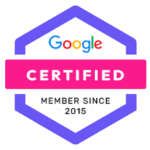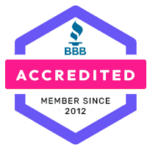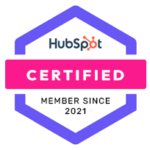Local SEO Strategies: How Small Businesses Can Attract More Clients Online

Why Local SEO Matters for Small Businesses
For small business owners, attracting local customers is the key to growth. Whether you run a family-owned bakery, a home service business, or a boutique agency, your ideal clients are searching online right now for services near them. But if your business isn’t showing up in those searches, you’re losing customers to competitors who have optimized their local SEO.
The good news? You don’t need a huge marketing budget to succeed in local search. With the right Local SEO strategies, you can increase your business’s visibility, attract more customers, and grow—without spending all your time on marketing.
Let’s break down how to optimize your business for local search and start bringing in more local clients today.
1. Optimize Your Google Business Profile (GBP) for Local Searches
Your Google Business Profile (GBP) is one of the most powerful tools for local SEO. It’s what appears when potential customers search for businesses like yours on Google Search or Google Maps.
How to Optimize Your Google Business Profile:
- Claim and verify your profile if you haven’t already.
- Use a clear business name—avoid keyword stuffing.
- Add accurate contact details (name, address, phone number) that match your website.
- Select the right categories (e.g., “Plumber” instead of just “Home Services”).
- Upload high-quality photos of your business, team, and products/services.
- Update business hours regularly, especially during holidays and events.
- Encourage and respond to customer reviews.
Pro Tip: Businesses with fully optimized Google Business Profiles get 5x more views than those with incomplete listings.
2. Get More Customer Reviews to Boost Rankings
Online reviews don’t just build trust—they also impact your local search rankings. Google favors businesses with more positive reviews, making them more likely to appear in search results.
How to Get More Reviews:
- Ask satisfied customers for reviews after a purchase or service.
- Send a follow-up email or text with a direct link to your review page.
- Display a QR code on receipts or at your location that leads to your review page.
- Respond to all reviews—thank positive reviewers and address negative feedback professionally.
Example: A local HVAC company made it a habit to ask for reviews after every completed job. Within six months, their Google rating improved to 4.9 stars, and they ranked #1 for “best HVAC company in [city].”
3. Use Local Keywords to Improve Search Visibility
Keywords tell Google what your business is about. Local keywords help Google match your business with people searching in your area.
Where to Use Local Keywords:
- Website titles and meta descriptions (e.g., “Affordable Web Design in Austin”).
- Headings and blog content (“How to Find the Best Web Designer in Austin”).
- Google Business Profile description.
- Image alt text and file names (e.g., “Houston-Bakery-Cupcakes.jpg”).
- Service pages (“Family-Owned Landscaping Services in Denver”).
Pro Tip: Use long-tail keywords like “best family lawyer in San Diego” instead of just “lawyer in San Diego” to rank higher with less competition.
4. Get Listed in Local Directories and Citations
A citation is any online mention of your business’s name, address, and phone number (NAP) on websites like Yelp, Yellow Pages, or industry-specific directories.
Where to List Your Business:
- Google Business Profile (Most important!).
- Bing Places and Apple Maps.
- Yelp, Angi, and Thumbtack (for service businesses).
- Facebook and LinkedIn Business Pages.
- Industry directories (e.g., Houzz for home improvement, Avvo for lawyers).
Pro Tip: Your business name, address, and phone number must be identical across all listings to avoid SEO penalties.
5. Create Localized Content to Drive More Traffic
Publishing local-focused content is an excellent way to rank higher in search results and attract more local customers.
Content Ideas for Local SEO:
- Location-specific blog posts (“The Best Coffee Shops in Downtown Chicago”).
- Case studies featuring local customers.
- A local FAQ page answering common customer questions.
- Posts about local events, partnerships, or charity involvement.
6. Optimize Your Website for Mobile Users
Over 60% of local searches come from mobile devices, meaning if your website isn’t mobile-friendly, potential customers will leave—and Google will rank you lower.
How to Improve Mobile SEO:
- Use a responsive website design that adapts to all screen sizes.
- Speed up your site by compressing images and using fast hosting.
- Make your contact info clickable (one-tap call, email, and directions buttons).
Final Thoughts: Turn Local Searches into New Customers
If your small business isn’t ranking locally, you’re missing out on potential customers who are actively searching for what you offer.
Your Local SEO Action Plan:
- Claim and optimize your Google Business Profile.
- Encourage happy customers to leave reviews.
- Use local keywords throughout your website.
- Get listed in local directories and citations.
- Publish location-based content.
- Ensure your website is mobile-friendly and fast.
📞 Need Help with Local SEO? Call us at 631-637-2772 or email us at success@heartcoregrowth.com to learn how we can help your business rank higher and attract more local clients.
People Also Ask
- Q: How can I improve my small business’s local SEO?
A: Optimize your Google Business Profile, collect customer reviews, use local keywords, and ensure your website is mobile-friendly. - Q: Why is local SEO important for small businesses?
A: Local SEO helps businesses appear in searches when customers look for nearby products or services, driving more traffic and sales. - Q: How do customer reviews impact local SEO?
A: Google ranks businesses with more positive reviews higher in search results, making reviews a key factor in local SEO success.









